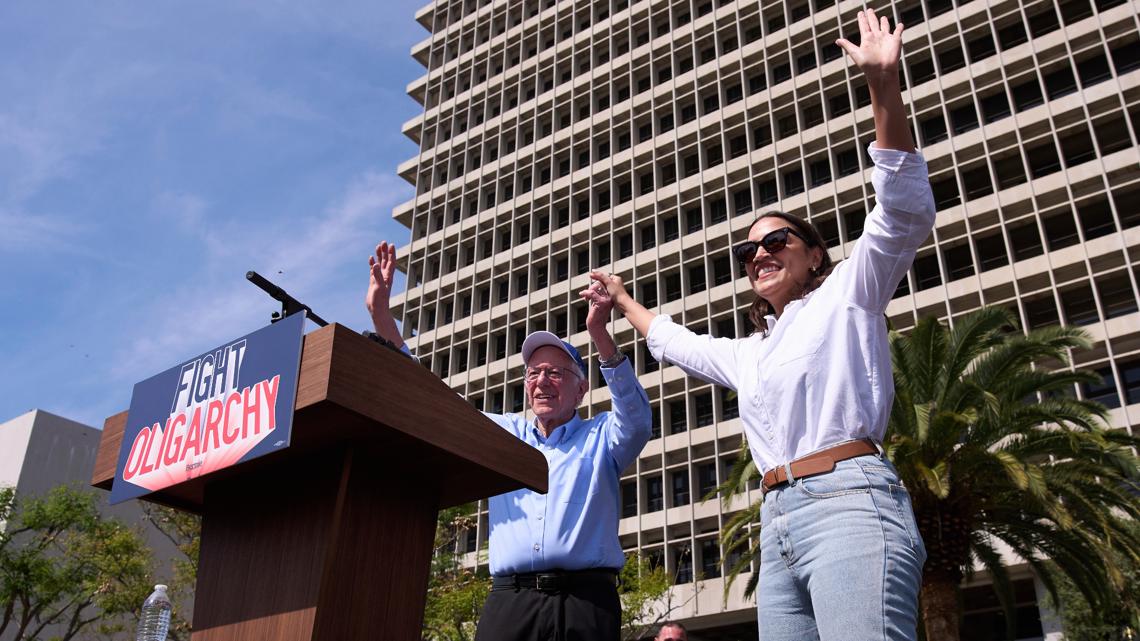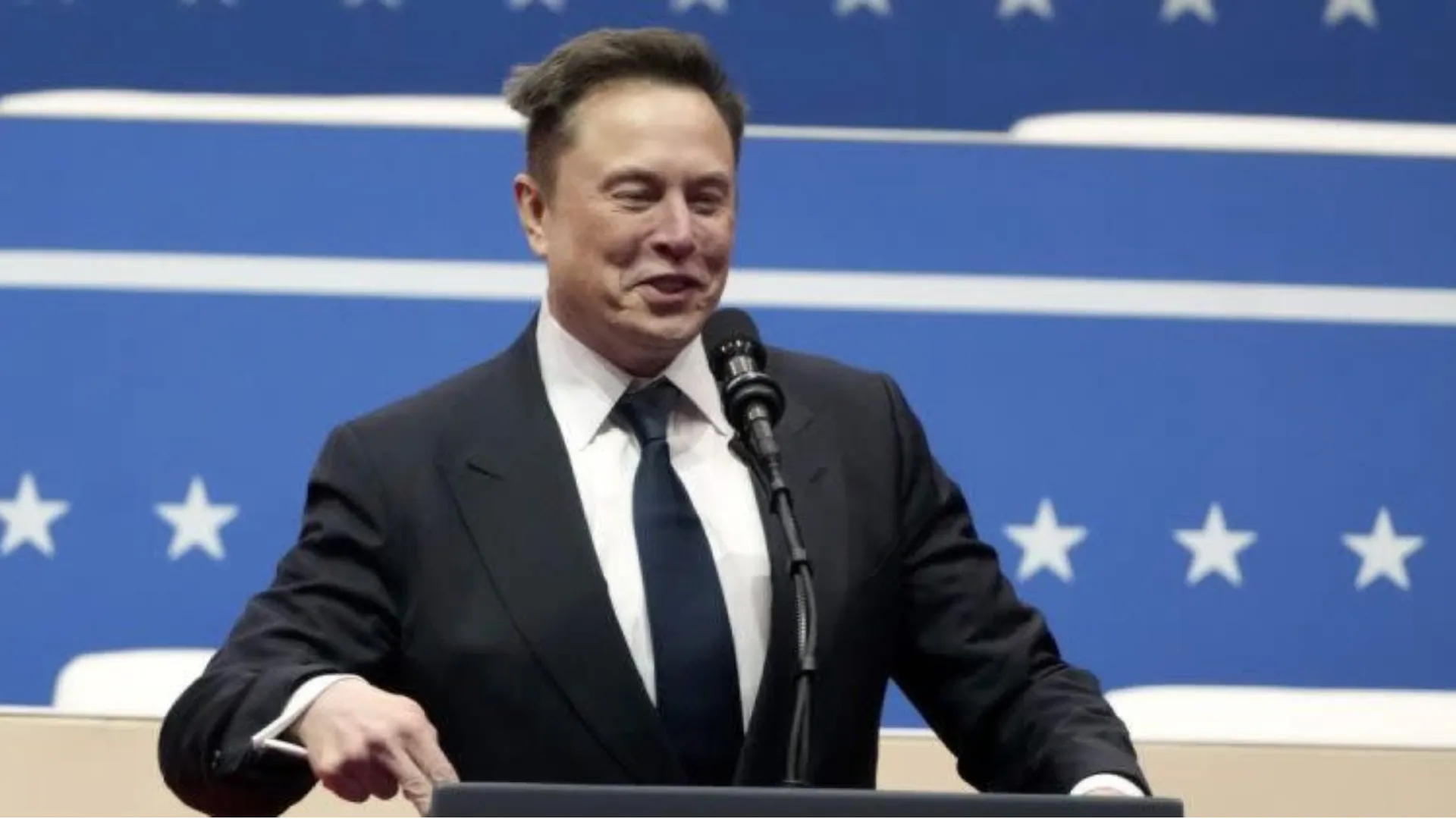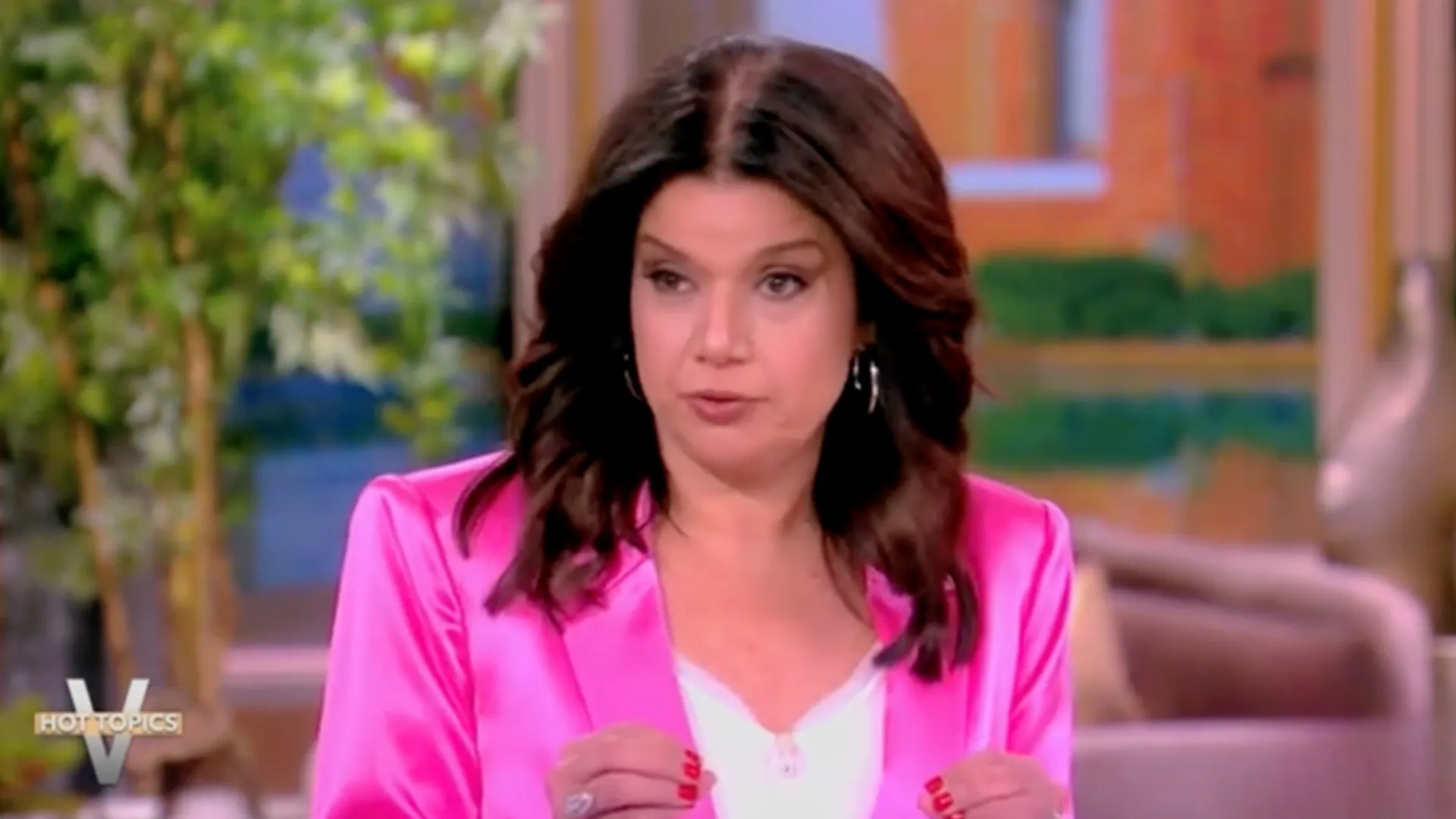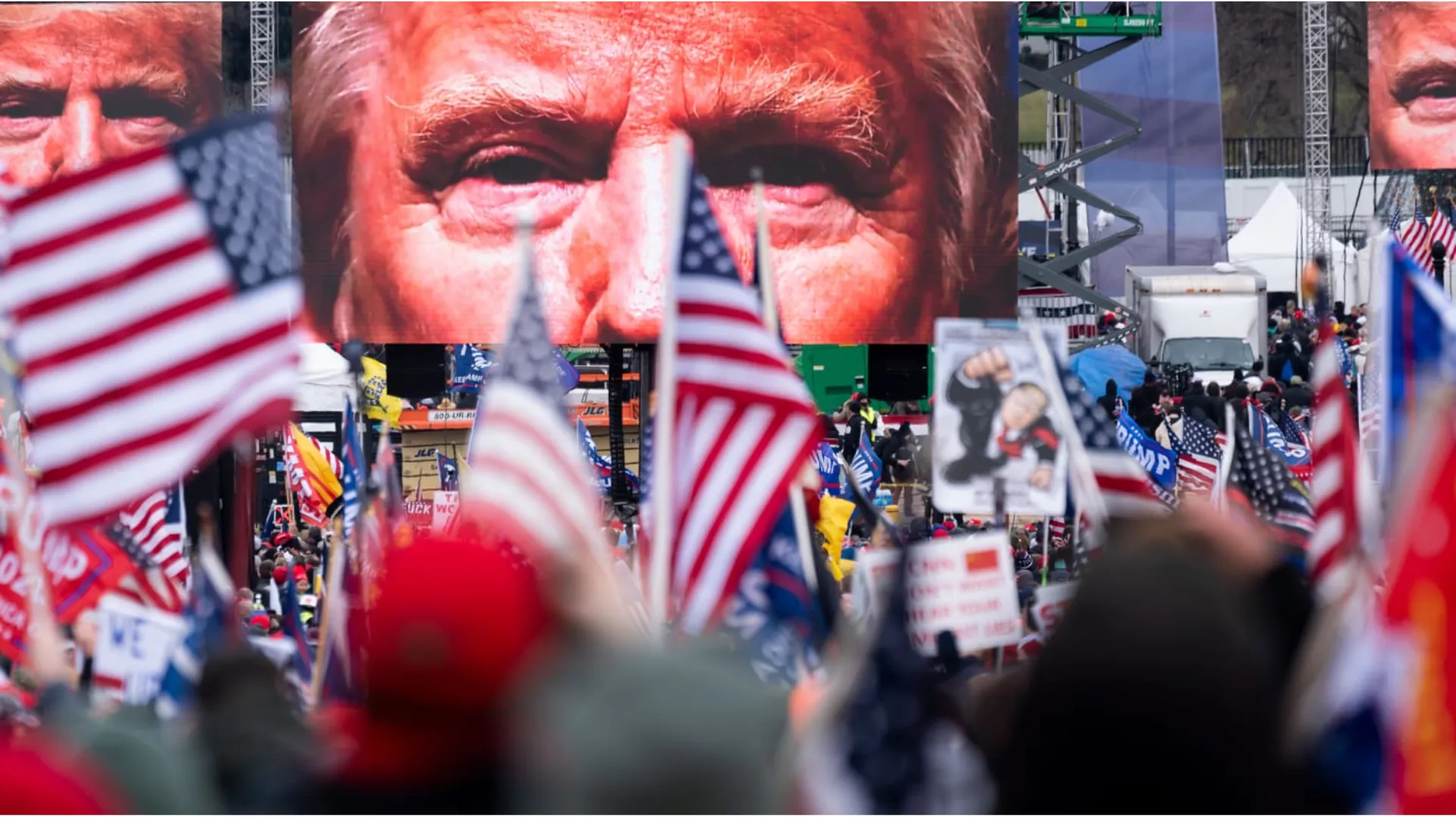
On a warm Saturday evening in downtown Los Angeles, Senator Bernie Sanders delivered a thunderous message to tens of thousands of supporters: the United States, under the leadership of President Donald Trump, is facing a moment of “extraordinary danger.”
Speaking before a crowd estimated at 36,000—the largest of his current national tour—Sanders painted a stark picture of an America at risk of slipping fully into the grip of oligarchy.
“We are living in a moment of extraordinary danger,” Sanders declared, the urgency in his voice matching the intensity of the massive crowd gathered in Gloria Molina Grand Park. “And how we respond to this moment will not only impact our lives but will impact the lives of our kids and future generations.”
It was the latest stop in his “Fight Oligarchy” tour, a nationwide effort aimed at rallying progressives against what Sanders and his allies describe as the alarming convergence of corporate power, authoritarianism, and right-wing populism that has taken hold under Trump’s second term.
While Sanders was speaking to a sea of progressives on the West Coast, President Trump was across the country in Miami, basking in chants of “U.S.A.!” at a high-profile Ultimate Fighting Championship (UFC) event.
For Trump, the reception was validation. “It says we’re doing a good job,” he told reporters aboard Air Force One. “If we weren’t doing a good job, we’d get the opposite.”
But for Sanders and his progressive allies, the applause at UFC events and the fanfare of Trump’s public appearances are not signs of a thriving democracy, but of a dangerous illusion—one where billionaires have hijacked the system to serve their own interests.

Saturday’s rally had the energy of a music festival and the gravitas of a political movement. Musical legends Neil Young and Joan Baez performed before the crowd, offering a reminder of the long-standing connection between music and protest in American history.
Their performances lent emotional weight to a night already charged with political urgency.
“This isn’t just a rally—it’s a wake-up call,” one attendee said. “We’re not just fighting Trump; we’re fighting a whole system that rewards greed and punishes ordinary people.”
Joining Sanders on stage was Representative Alexandria Ocasio-Cortez (D-N.Y.), who has been a vocal critic of Trump’s economic and social policies and is co-headlining much of the “Fight Oligarchy” tour. Her speech struck a deeply personal and emotional tone.
“The feeling of the water rising up to our throats, the impossibility to afford anything easily, the fear of speaking up, the deeply bitter and toxic division driven more by algorithms on social media than individual thought, the crumbling of our rights and protections,” Ocasio-Cortez said.
“Understand that all of this is what it means and what it feels like to be governed by billionaires.”
Sanders, now 83, remains one of the most influential progressive figures in American politics. Though he is not expected to run for president again, his message has never been more urgent—or more pointed.
“I’m no longer talking about how we’re moving to oligarchy,” Sanders told the crowd. “I’m talking about how we are living today in an oligarchic form of society.”
Sanders argued that Trump, despite his populist rhetoric, has used the power of the presidency to enrich the wealthiest Americans, cut essential services for the working class, and deepen inequality.
“This administration is not draining the swamp,” Sanders said. “It is handing over the keys of government to the very swamp creatures they promised to remove.”
He pointed to massive tax cuts for corporations, attempts to slash Medicaid and Social Security, and an ongoing trade war that has raised consumer prices as evidence that Trump’s economic policies benefit the top one percent at the expense of everyone else.
The contrast between Sanders’s rally and Trump’s UFC appearance couldn’t have been starker. While Sanders spoke of corporate greed, workers’ rights, and social justice, Trump was all smiles and handshakes in Miami, relishing his welcome at a sporting event steeped in masculine bravado.
Trump’s appearance at the UFC event was seen by supporters as a sign of strength, charisma, and popularity—an image carefully cultivated through his public appearances and social media presence.
But to Sanders and his allies, these performances mask a more sinister agenda.
“Trump knows how to play the part,” Sanders said. “He plays the strongman. But the reality is, behind the spectacle, he is stripping working people of their dignity, their healthcare, their education, and their democracy.”
Sanders and Ocasio-Cortez’s “Fight Oligarchy” tour is about more than just speeches and rallies—it’s a call to action. At each stop, volunteers register voters, sign up new campaign volunteers, and connect people to local progressive organizations.
The tour is designed to inspire grassroots organizing in preparation for the 2026 midterms and beyond. With the Democratic Party reeling from losses in the 2024 elections, progressives are aiming to rebuild the party from the bottom up—starting with local elections, labor organizing, and direct action.
“This is about power—who has it, who’s using it, and who’s going to take it back,” said Ocasio-Cortez. “And we believe that power belongs to the people.”
The movement that Sanders and Ocasio-Cortez are helping to build is resonating strongly with younger voters, many of whom feel disillusioned with the political system and increasingly squeezed by economic pressures.
The rally in LA drew thousands of college students, gig workers, and activists, many holding signs that read “Tax the Rich,” “Healthcare is a Human Right,” and “Democracy, Not Oligarchy.”
“I came out tonight because I’m scared,” said Lena Martinez, a 26-year-old graduate student from East LA. “But I’m also hopeful. I think Bernie and AOC are telling the truth about what’s really going on. And I think we have to fight.”
Others echoed the sentiment that traditional political leaders are failing to meet the moment.
“I don’t trust Biden, and I definitely don’t trust Trump,” said 33-year-old warehouse worker Devante Harris. “But Bernie? AOC? They’re the only ones talking about what people like me are going through.”
One of the key themes of the rally was that defeating Trump isn’t enough. The movement must also dismantle the system that enabled him.
“Trump is not the disease—he’s a symptom,” Sanders said. “He is the product of a broken economy, a corrupt political system, and a media culture that values entertainment over truth.”
Ocasio-Cortez agreed. “Trumpism is not just one man—it’s a political ideology based on fear, division, and domination. And it is spreading. We have to meet it with courage, unity, and a vision of justice.”
After the LA rally, Sanders and Ocasio-Cortez are set to continue their tour with stops in Idaho, California’s Central Valley, and Montana—states where progressive candidates rarely campaign, but where Sanders believes the message can resonate.
“Everywhere we go, we hear the same thing: people are struggling, and no one is listening,” Sanders said. “We’re here to listen. We’re here to organize. And we’re here to fight.”
The tour’s next leg will focus on rural and working-class communities, where Sanders hopes to galvanize support for progressive economic policies and challenge the narrative that only Trump can speak for the disaffected.
While Sanders and Ocasio-Cortez are not currently running for national office, their tour is clearly laying the groundwork for a broader political realignment within the Democratic Party.
Whether they are building support for a new wave of progressive candidates or planting seeds for future electoral fights, the message is clear: the current trajectory of American politics is unacceptable—and change is possible, but only if people are willing to fight for it.
“This is not just about opposing Trump,” Sanders concluded. “It’s about building a government that works for all of us, not just the billionaire class. And that starts now, with all of us, in every city, every town, every neighborhood across America.”
As the rally wound down after five hours of speeches, music, and organizing, the crowd of 36,000 began to disperse—but the energy in the air remained electric. For those in attendance, it was more than a political event. It was a reminder that the fight against oligarchy is far from over—and that a different future is still within reach.






